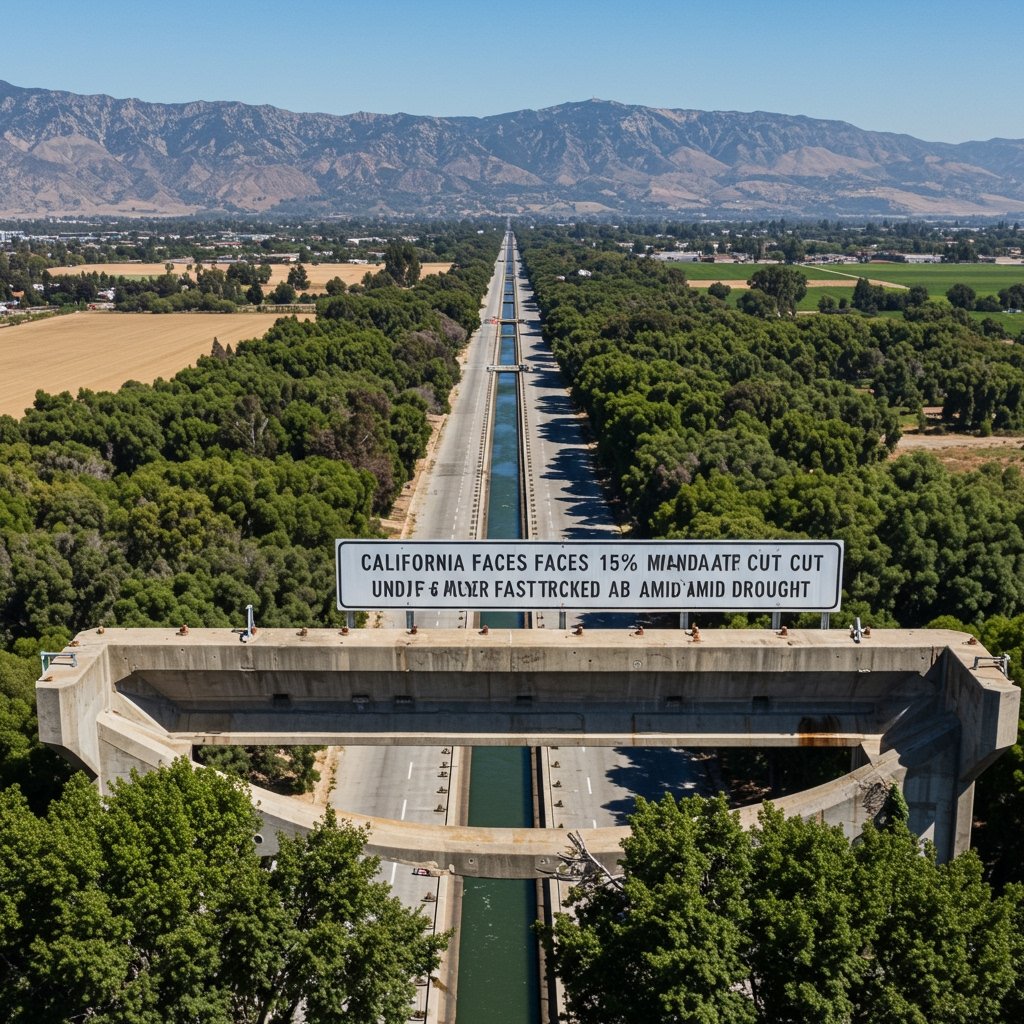California Confronts Drought with Proposed Mandatory Water Cuts
California is currently navigating a precarious water security landscape, prompting swift legislative action. A significant proposed measure, Assembly Bill 789 (AB 789), is rapidly advancing through the state legislature, spearheaded by its sponsor, Assemblymember Elena Rodriguez. This bill aims to implement a mandatory 15% statewide reduction in urban water usage. The proposed effective date for this critical emergency measure is April 1, 2025.
The urgency driving AB 789 stems directly from stark, unsettling projections indicating the potential onset of a prolonged drought. Data concerning the state’s water reserves paints a concerning picture. Major reservoirs, particularly those located in vital agricultural regions like the Central Valley, are currently reporting levels significantly below their historical averages for this time of year. Reports highlight that some of these key reservoirs are holding under 40% capacity, a stark indicator of the water deficit building within the state’s infrastructure.
The Scope and Impact of AB 789
The proposed mandatory 15% reduction is not a minor adjustment; it represents a substantial cut intended to conserve water resources rapidly in the face of potential scarcity. The measure targets urban water usage broadly, meaning its impact will be widespread. Specifically, it will affect municipal water districts across the state, requiring them to implement measures to meet the reduction target within their service areas. This, in turn, will necessitate changes in water consumption patterns for millions of Californians.
Beyond residential use, the bill also directly impacts businesses. Commercial and industrial sectors utilizing urban water supplies will need to find ways to decrease their water footprint by the mandated 15%. The specific mechanisms for achieving this reduction at the individual business or household level would likely be determined by the local municipal water districts, guided by state regulations enacted through AB 789.
The April 1, 2025, start date provides a defined timeline for implementation, signaling the legislature’s view that action is needed relatively soon but allowing some lead time for planning and public awareness campaigns. The statewide scope ensures that conservation efforts are shared across urban areas, rather than being confined to specific regions, reflecting the interconnected nature of California’s water system and the broad impact of drought conditions.
Legislative Journey and Public Discourse
AB 789’s swift movement through the legislature underscores the perceived necessity of taking decisive action on water conservation. The bill’s rapid advancement suggests a legislative will to address potential drought impacts proactively, rather than reactively. Following its progression through the Assembly, the bill has moved towards a critical juncture in the legislative process: a final vote in the State Senate.
The anticipation of this vote, expected later this month, has intensified public debate surrounding the bill. While proponents argue that a mandatory reduction is a necessary step to ensure water availability for essential uses and to build resilience against future dry periods, the measure has not been met without significant opposition.
Concerns about the bill’s potential ramifications have been voiced strongly by various stakeholder groups. Among the most vocal are agricultural and business organizations. These groups have raised significant concerns over the economic consequences that could result from a mandatory 15% reduction in urban water usage. For agricultural businesses, reduced water availability, even from urban supplies used in processing or related activities, could impact operations. For other businesses, particularly those heavily reliant on water, the mandated reduction could lead to increased operational costs, necessitate expensive efficiency upgrades, or potentially curtail activities.
The debate centers on balancing the undeniable need for water conservation in a drought-prone state with the economic health and stability of its diverse industries and communities. Opponents argue for greater flexibility, incentives for voluntary conservation, or more targeted approaches rather than a blanket mandatory cut.
Looking Ahead to the Senate Vote
The final decision on AB 789 rests with the State Senate. The vote expected later this month will determine whether this significant piece of emergency water restriction legislation moves forward to the Governor’s desk. The outcome will have profound implications for how California manages its precious water resources in the face of a changing climate and the ever-present threat of drought.
Should AB 789 pass, it would represent a major policy shift towards mandatory, rather than primarily voluntary, conservation measures in urban settings during times of projected scarcity. Its implementation would require close coordination between state agencies, municipal water districts, and the public to ensure the 15% reduction target is met effectively and equitably across the state’s urban landscape.



















